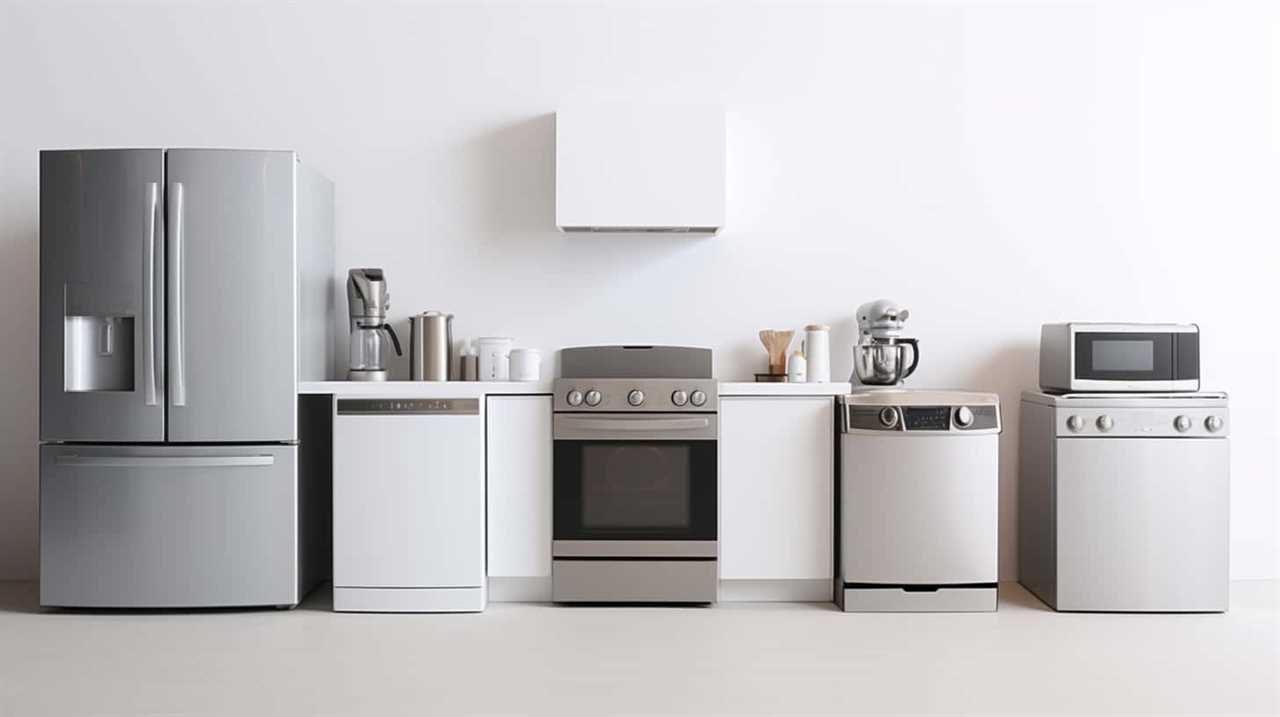We are all familiar with the annoyance of tripping a circuit unexpectedly.
Did you know that a 15 amp circuit can handle a maximum load of 1,800 watts?
Understanding the capacity of your electrical system is crucial to avoid overloading it.
In this article, we will explore the number of appliances that can safely operate on a 15 amp circuit.
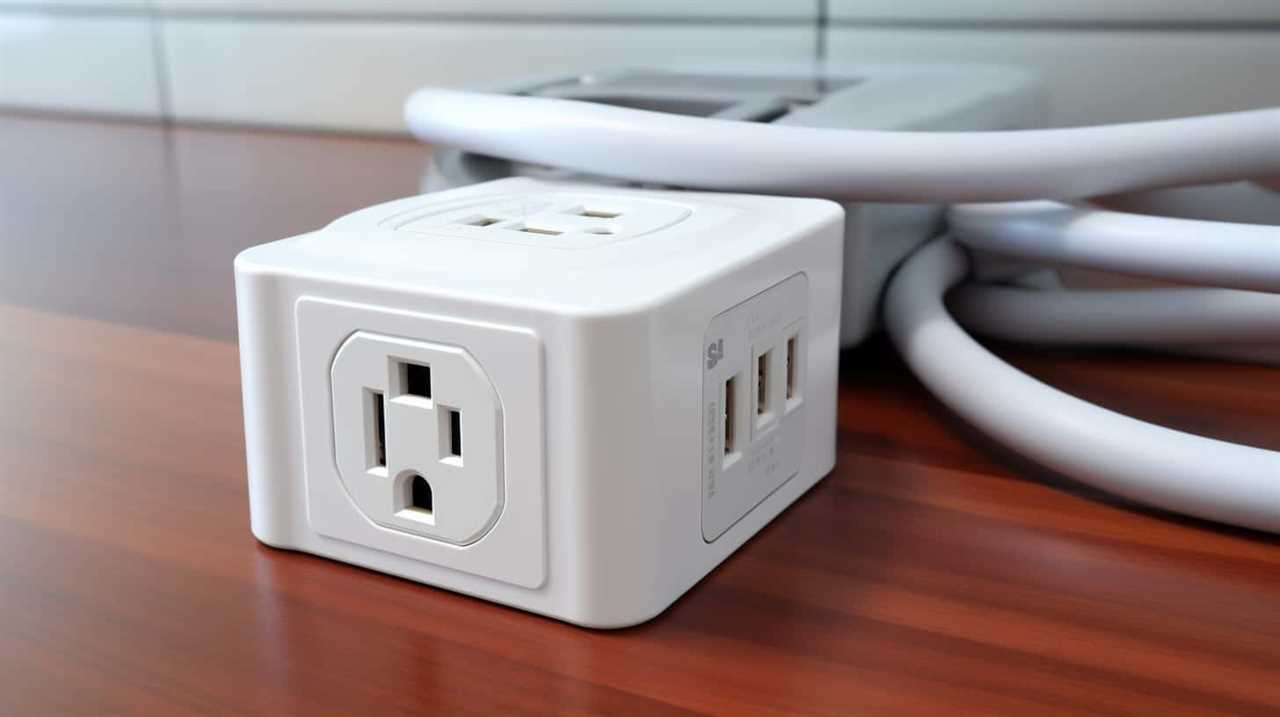
Get ready to master the art of managing your electrical load and keeping your system safe and efficient.
Key Takeaways
- A 15 Amp circuit can handle a maximum current of 15 Amperes.
- The amperage of an appliance may vary depending on operating conditions and load.
- Accurately calculating amperage helps ensure the circuit can handle the power requirements of all appliances.
- Running multiple high-power appliances simultaneously can exceed the circuit’s capacity.
Understanding Amps and Circuits
In this article, we’ll delve into the subtopic of understanding amps and circuits.
When it comes to power consumption and energy efficiency, understanding amps and circuits is crucial.
Amps, short for amperes, measure the flow of electric current in a circuit. Circuits, on the other hand, provide a path for the current to flow.

Power consumption refers to the amount of electrical energy used by a device or system. By understanding amps and circuits, one can determine the power consumption of various appliances and devices.
This knowledge is essential for ensuring energy efficiency. By properly distributing appliances across circuits and considering their power requirements, one can optimize energy usage and minimize wastage.
Therefore, understanding amps and circuits is fundamental for achieving energy efficiency in electrical systems.
What Is a 15 Amp Circuit
To understand the concept of a 15 Amp circuit, we need to delve deeper into the world of electrical currents and their distribution.

A 15 Amp circuit refers to a circuit that can handle a maximum current of 15 Amperes. In residential settings, 15 Amp circuits are commonly used for lighting fixtures and general purpose outlets.
It’s important to note that the current rating of a circuit determines the maximum amount of electrical current it can safely carry without tripping the circuit breaker.
To ensure the safe operation of a 15 Amp circuit, it’s crucial to perform regular circuit breaker maintenance. This includes inspecting and testing the circuit breaker for any signs of damage or malfunction, as well as ensuring that the circuit isn’t overloaded with appliances or devices that draw excessive current.
The Importance of Circuit Load
Let’s now delve into the importance of circuit load when considering how many appliances can be safely used on a 15 Amp circuit. Understanding circuit load is crucial for calculating power consumption and effectively managing electrical load.

Here are four key reasons why circuit load is significant:
- Safety: Overloading a circuit can lead to overheating, electrical fires, and damage to appliances.
- Efficiency: Proper load management ensures that each appliance receives enough power for optimal performance.
- Capacity: By knowing the maximum load a circuit can handle, you can prevent tripped breakers and circuit outages.
- Future Planning: Considering circuit load helps you determine if additional circuits or electrical upgrades are necessary.
With a clear understanding of circuit load, we can move on to calculating appliance amperage and determining how many appliances can safely be used on a 15 Amp circuit.
Calculating Appliance Amperage
When calculating appliance amperage, we need to take into account the power requirements of each individual appliance on a 15 Amp circuit. This is crucial in determining circuit capacity and ensuring that the circuit isn’t overloaded.
To calculate power usage, we can use the formula P = VI, where P is the power in watts, V is the voltage in volts, and I is the current in amperes. By rearranging the formula to solve for I, we can determine the amperage drawn by each appliance.
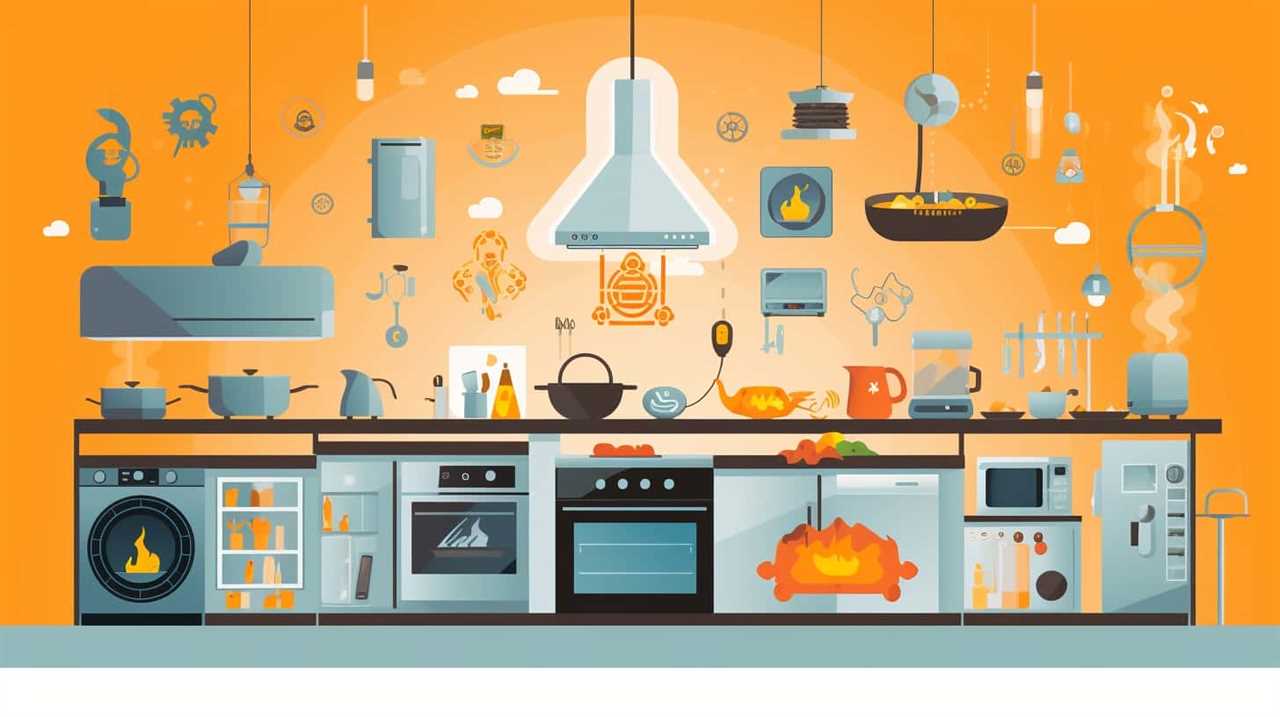
It’s important to note that the amperage of an appliance may vary depending on its operating conditions and load. Therefore, it’s essential to refer to the manufacturer’s specifications or consult an electrician to accurately calculate the amperage and ensure that the circuit can handle the power requirements of all appliances.
Common Appliances and Their Amp Ratings
We can now explore the amp ratings of common appliances that can be safely used on a 15 Amp circuit. Understanding the amp ratings of your appliances is crucial for ensuring that your circuit doesn’t become overloaded.
Here are some common appliances and their amp ratings:
- Refrigerator: 1.5-2.5 Amps
- Microwave: 10-15 Amps
- Dishwasher: 9-12 Amps
- Washing machine: 10-15 Amps
It’s important to note that these ratings can vary depending on the specific model and power requirements.

To calculate the maximum load for your circuit, add up the amp ratings of all the appliances you plan to use simultaneously. Keep in mind that running multiple high-power appliances at the same time can exceed the circuit’s capacity.
To conserve energy and prevent overloading, consider energy-saving tips such as using energy-efficient appliances and scheduling appliance usage during off-peak hours.
Factors to Consider for Maximum Load
When considering the maximum load on a 15 Amp circuit, there are several factors to take into account.
First, it’s important to understand the amp rating limitations of the circuit, as exceeding this limit can lead to tripped breakers or even electrical fires.

Second, a thorough power consumption analysis should be conducted to determine the total wattage of all appliances connected to the circuit.
Lastly, it’s crucial to ensure that the circuit breaker capacity is sufficient to handle the load.
Amp Rating Limitations
Understanding the amp rating limitations is crucial for ensuring electrical safety and preventing overload on a 15 amp circuit. The amp rating represents the maximum amount of current that a circuit can handle without overheating or causing damage. Exceeding this limit can lead to tripped breakers, melted wires, or even electrical fires. Therefore, it’s essential to consider the power consumption of each appliance connected to the circuit and ensure that the total load doesn’t exceed the 15 amp rating.
Power Consumption Analysis
To determine the maximum load on a 15 amp circuit, it is important to analyze the power consumption of various appliances. By understanding the power requirements of each device, we can ensure that the total load does not exceed the circuit’s capacity. When calculating power consumption, it is essential to consider both the wattage and the operating time of each appliance. To make this analysis easier, here is a table showcasing the power requirements of common household appliances:

| Appliance | Power Consumption (Watts) |
|---|---|
| Refrigerator | 150 |
| Air Conditioner | 1000 |
| Microwave | 1200 |
| Television | 150 |
| Laptop | 60 |
To ensure that the total power consumption remains within the 15 amp limit, power-saving tips and the use of energy-efficient appliances are highly recommended. By choosing energy-efficient models and employing smart power management techniques, we can optimize our electricity usage and prevent circuit overloads.
Circuit Breaker Capacity
To ensure a safe and efficient electrical system, it’s crucial to consider various factors when determining the maximum load for a 15 amp circuit breaker. When it comes to circuit breaker capacity, there are several key factors to keep in mind during circuit breaker installation and electrical system maintenance:
- Wire size: The size of the wire connected to the circuit breaker must be able to handle the maximum load. Using an undersized wire can lead to overheating and potential fire hazards.
- Ambient temperature: High ambient temperatures can cause the circuit breaker to trip more frequently, so it’s important to consider the temperature of the surrounding environment.
- Continuous load: If the circuit will be carrying a continuous load, it’s recommended to limit the maximum load to 80% of the circuit breaker’s capacity to prevent overheating.
- Power factor: Some appliances, such as motors, can have a low power factor, which affects the circuit’s capacity. It’s important to consider the power factor when calculating the maximum load.
Considering these factors will help ensure the safe and efficient operation of the electrical system.
Now, let’s move on to discussing the recommended load for 15 amp circuits.
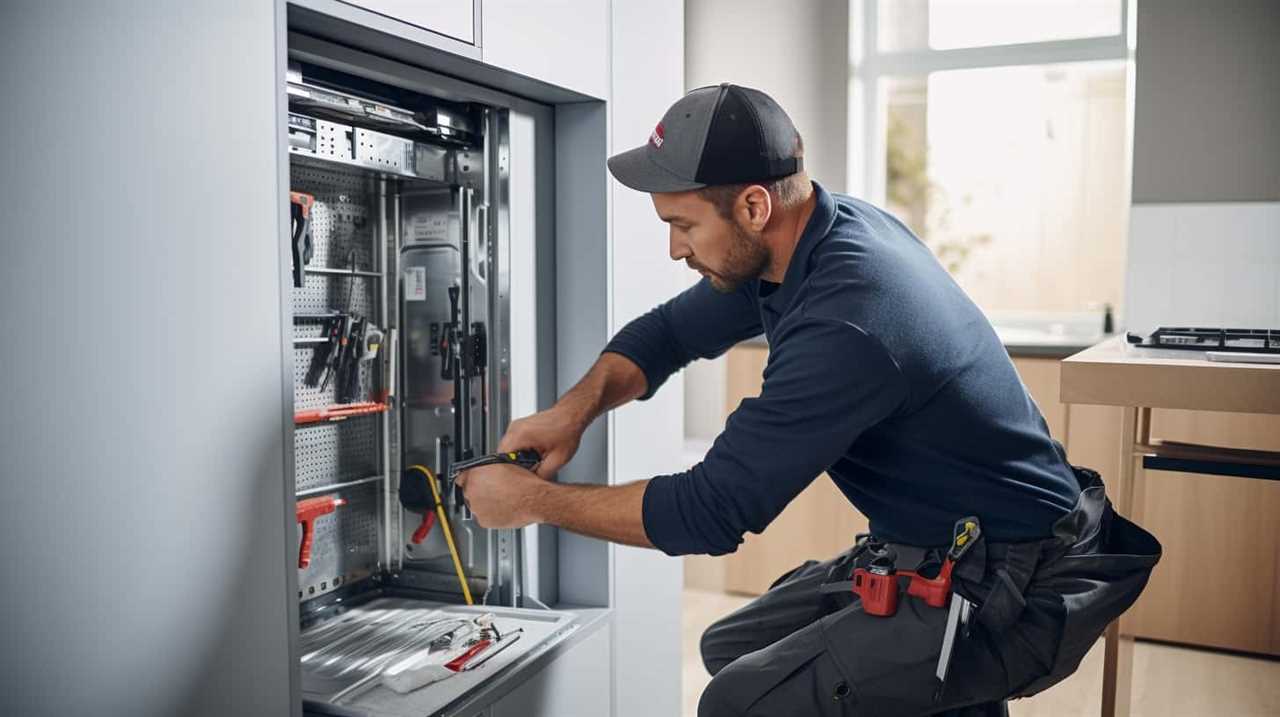
Recommended Load for 15 Amp Circuits
When considering the recommended load for 15 amp circuits, there are several key points to keep in mind.
First, it’s important to determine the maximum wattage of the appliances being used on the circuit. This will help ensure that the total load doesn’t exceed the circuit’s capacity.
Additionally, safety considerations and limitations must be taken into account, as exceeding the recommended load can lead to overheating and potential electrical hazards.
Maximum Appliance Wattage
While it’s important to consider the maximum appliance wattage for 15 amp circuits, we must also keep in mind the recommended load. It’s crucial to understand the maximum power consumption that an appliance can have in order to prevent overloading the circuit.

Additionally, considering the appliance efficiency is essential to ensure optimal energy usage. Here are some key points to remember when determining maximum appliance wattage:
- Calculate the wattage of each appliance by multiplying the voltage by the current it draws.
- Check the manufacturer’s specifications or labels on appliances to find their wattage ratings.
- Be mindful of the total wattage of all appliances connected to a 15 amp circuit to avoid exceeding its capacity.
- Consider using energy-efficient appliances to reduce the overall power consumption and maximize the number of appliances that can be safely connected.
Safety Considerations and Limitations
As we delve into the topic of safety considerations and limitations for 15 amp circuits, it’s important to note that there are specific guidelines to follow in order to ensure the proper and safe operation of appliances.
When it comes to power capacity, a 15 amp circuit can handle a maximum load of 1,800 watts. However, it’s recommended to keep the load below 80% of the circuit’s capacity, which is around 1,440 watts. This allows for a margin of safety and helps prevent overheating or tripping of the circuit breaker.
Additionally, it’s crucial to distribute the electrical load evenly across the circuit to avoid overloading. This means avoiding situations where one appliance consumes a significant portion of the circuit’s capacity while leaving little for other appliances.
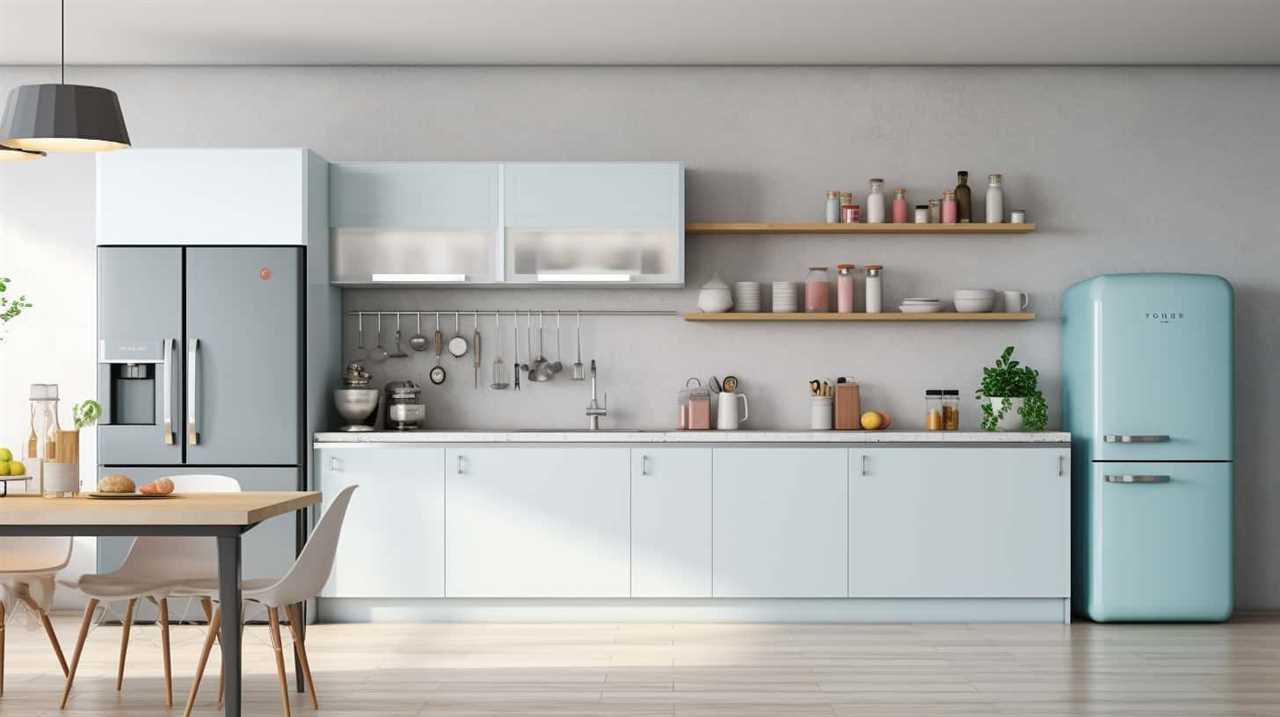
By following these guidelines, you can ensure the safe and efficient operation of your appliances on a 15 amp circuit.
Moving forward, let’s discuss the importance of using power strips and surge protectors to further protect your appliances and electrical system.
Using Power Strips and Surge Protectors
To maximize the number of appliances that can be safely connected to a 15 Amp circuit, we recommend using power strips and surge protectors. These devices provide additional outlets and protection against electrical surges, ensuring the safety and reliability of your appliances.
Here are some key benefits of using power strips and surge protectors:
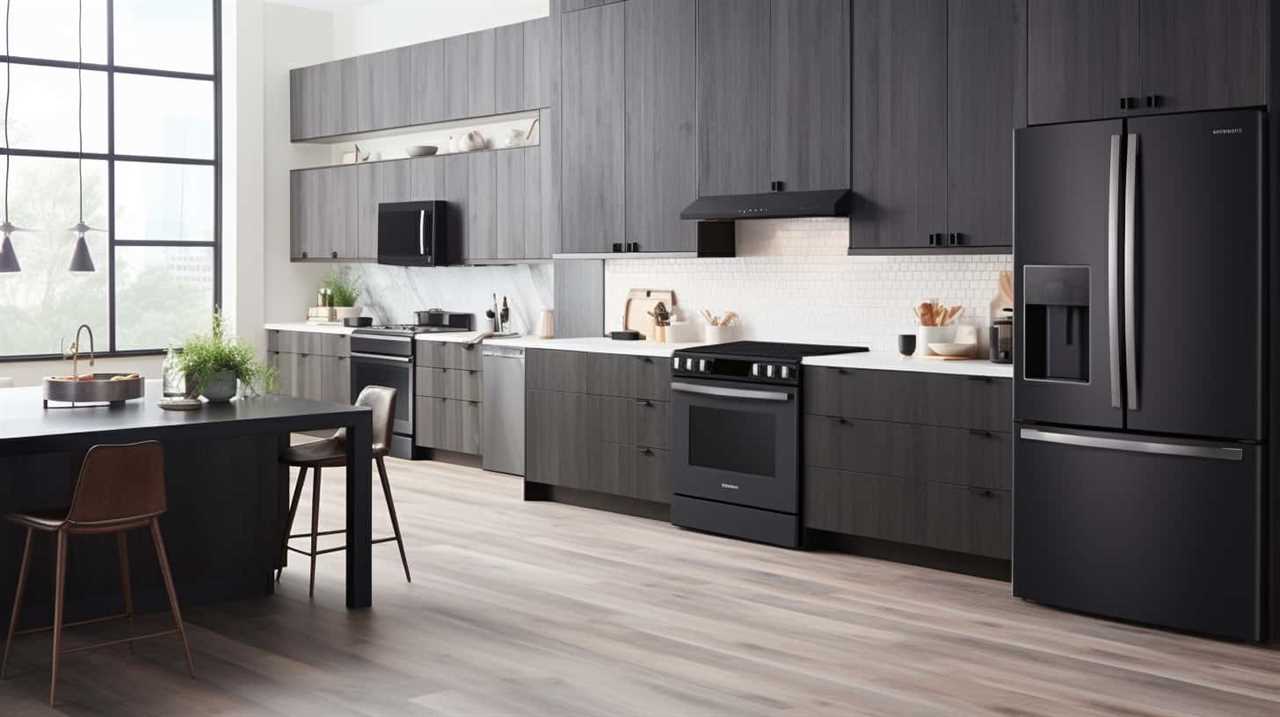
- Power strip safety: Power strips are equipped with overload protection, preventing the circuit from exceeding its capacity. They also have built-in circuit breakers that trip in case of a short circuit or excessive current draw.
- Surge protector benefits: Surge protectors offer protection against voltage spikes and surges, which can damage sensitive electronics. They divert excess voltage to the ground, safeguarding your appliances from potential harm.
- Increased convenience: Power strips allow you to connect multiple appliances to a single outlet, saving space and reducing clutter.
- Enhanced equipment lifespan: With surge protection, your appliances are shielded from power fluctuations, extending their lifespan and preventing costly repairs or replacements.
How to Avoid Overloading a 15 Amp Circuit
To avoid overloading a 15 Amp circuit, it’s important to understand the amp limits for appliances and follow power usage guidelines.
Each appliance has a specific amp rating, which should be considered when determining how many can safely be used on a circuit.
Being mindful of the total power consumption and avoiding running multiple high-wattage appliances simultaneously can prevent circuit tripping and potential damage.
Amp Limits for Appliances
We should be aware of the amp limits for appliances to prevent overloading a 15 Amp circuit. Understanding the amp usage of different appliances is crucial for maintaining electrical safety in our homes. Here are some important points to consider:

- Identify the amp rating: Check the appliance’s label or manual for the amp rating. This will indicate the maximum amount of current the appliance requires.
- Calculate total amp usage: Add up the amp ratings of all appliances connected to a circuit. Ensure that the total doesn’t exceed the circuit’s amp capacity.
- Use a power strip or surge protector: These devices come with built-in circuit breakers that can prevent overloading.
- Consider energy-efficient appliances: Opting for appliances with lower amp ratings can help prevent overload situations.
Power Usage Guidelines
Let’s establish some power usage guidelines to prevent overloading a 15 Amp circuit. Conducting a power consumption analysis is crucial in understanding how much power each appliance consumes and whether it can safely be used on a 15 Amp circuit. To help you make informed decisions, here are some safety precautions to follow:
| Appliance | Power Consumption | Recommended Usage |
|---|---|---|
| Refrigerator | 150-800 W | Continuous |
| Microwave | 700-1,200 W | Intermittent |
| Hair Dryer | 1,200-1,800 W | Intermittent |
By referring to this table, you can determine which appliances can be used simultaneously without exceeding the circuit’s capacity. It’s important to note that continuous usage refers to appliances that run for extended periods, while intermittent usage is for appliances used for shorter durations. Following these guidelines will help you avoid circuit tripping and ensure the safe operation of your electrical system.
Now let’s discuss how to avoid circuit tripping when using multiple appliances on a 15 Amp circuit.
Avoiding Circuit Tripping
When using multiple appliances on a 15 Amp circuit, it’s important to take steps to avoid circuit tripping and ensure the safe operation of your electrical system. To prevent overloading and potential damage, here are some key guidelines to follow:

- Be aware of the maximum load capacity of the circuit, which is typically 80% of the circuit’s rating. For a 15 Amp circuit, this would be 12 Amps.
- Calculate the total power consumption of the appliances you plan to use simultaneously and ensure it’s below the maximum load capacity.
Consider distributing the appliances across different circuits or using power strips with built-in circuit breakers to avoid exceeding the capacity of a single circuit.
- Regularly inspect and maintain your electrical system to ensure its safety and efficiency.
Tips for Efficient Energy Use
To maximize energy efficiency, it’s important to limit the number of appliances connected to a 15 Amp circuit. By adopting power saving techniques and using energy efficient appliances, you can reduce your energy consumption and lower your electricity bills.
One effective power saving technique is to unplug appliances when they aren’t in use. Many devices consume power even when turned off, known as vampire power.
Using energy efficient appliances, such as those with ENERGY STAR certification, can also significantly reduce energy usage. These appliances are designed to operate using less energy without compromising performance.
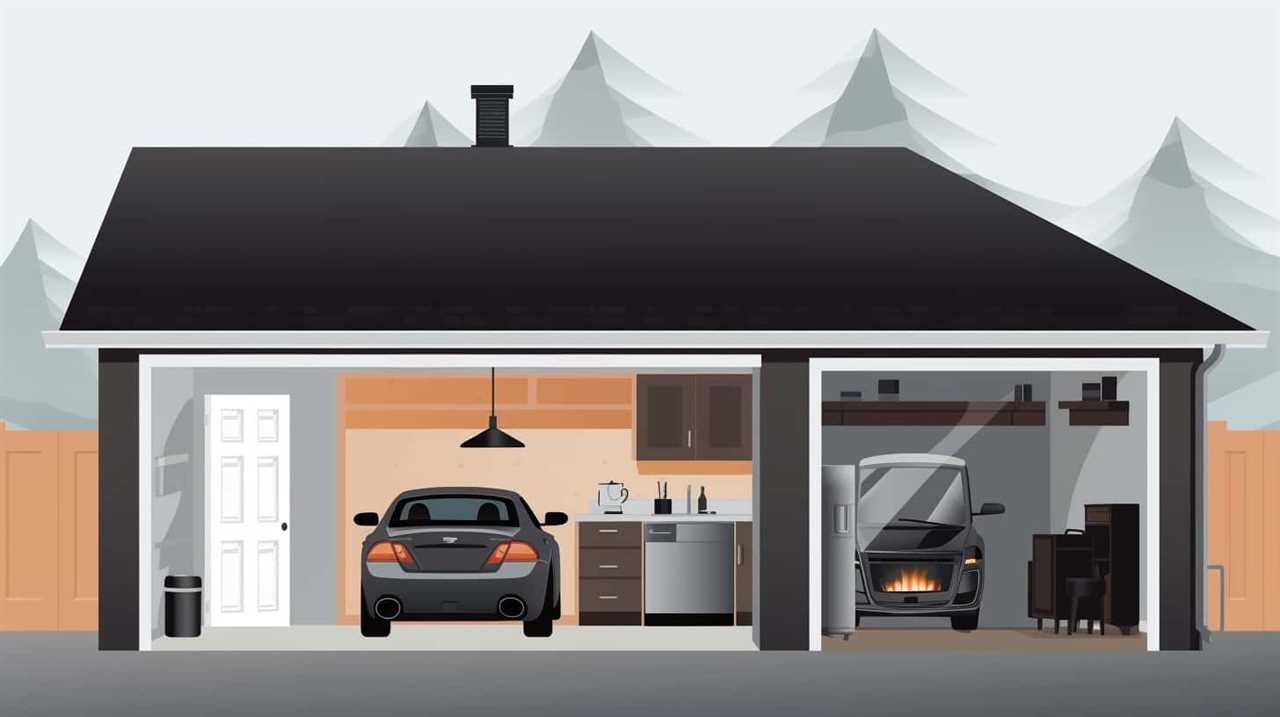
Additionally, using power strips with built-in timers or sensors can automatically turn off appliances when not in use, further reducing energy waste.
Upgrading to a Higher Amp Circuit
Upgrading to a higher amp circuit offers several benefits.
Firstly, it allows for the use of more appliances without the risk of overloading the circuit. This can lead to improved convenience and productivity in the household or workplace.
Additionally, upgrading to a higher amp circuit can prevent potential safety hazards such as electrical fires.

However, it’s important to consider the cost implications of such an upgrade, as it may require rewiring or the installation of a new circuit breaker panel.
Benefits of Higher Amp
We have discovered the benefits of upgrading to a higher amp circuit. Increasing the amperage of your circuit can provide several advantages that enhance the functionality and efficiency of your electrical system. Here are some benefits to consider:
- Greater Capacity: A higher amp circuit allows for the connection of more appliances and devices, reducing the risk of overloading.
- Improved Performance: With increased amperage, appliances can operate at their optimal levels, ensuring better performance and longevity.
- Reduced Tripping: Upgrading to a higher amp circuit lowers the chances of circuit breakers tripping frequently, providing a more reliable power supply.
- Flexibility: A higher amp circuit provides flexibility to accommodate future electrical needs and additions to your system.
Appliance Overload Prevention
One advantage of upgrading to a higher amp circuit is that it allows us to prevent appliance overload. When a circuit is overloaded, it can cause overheating, damage to appliances, and even electrical fires. By upgrading to a higher amp circuit, we increase the capacity of the circuit to handle more appliances without overloading. This means we can distribute the electrical load more evenly and avoid exceeding the circuit’s maximum capacity.
It’s important to note that even with a higher amp circuit, we still need to practice appliance load management to ensure the circuit isn’t overloaded. Appliance load management is crucial in maintaining electrical safety precautions. This involves considering the power requirements of each appliance and distributing them across multiple circuits if necessary.

Cost Considerations for Upgrade
Considering the cost of upgrading to a higher amp circuit, it’s important to evaluate the potential benefits and drawbacks. Here are some key points to consider:
- Cost analysis: Upgrading to a higher amp circuit can be a significant investment. It’s crucial to assess the cost of materials, labor, and any necessary permits before making a decision.
- Energy efficiency: A higher amp circuit can provide more power, allowing for the use of additional appliances without overloading the circuit. This can lead to improved energy efficiency and potentially lower utility bills.
- Increased capacity: With a higher amp circuit, you can add more appliances or devices to your electrical system, providing greater convenience and functionality.
- Future-proofing: Upgrading to a higher amp circuit can also future-proof your electrical system, ensuring that it can handle any potential increases in power demand.
Considering these factors, it’s important to weigh the cost analysis and potential benefits of upgrading to a higher amp circuit.
However, before attempting any electrical work, it’s advisable to consult and hire a professional electrician to ensure a safe and compliant installation.
Hiring a Professional Electrician
When hiring a professional electrician, it’s crucial to ensure that they’re experienced and qualified for the job. Hiring an experienced electrician is essential to handle the complexities of electrical system maintenance.

An experienced electrician possesses the necessary skills and knowledge to diagnose and solve electrical issues efficiently. They’re well-versed in electrical codes and regulations, ensuring that all work is done safely and up to standard.
By entrusting your electrical system to a qualified professional, you can have peace of mind knowing that the job will be done correctly and safely.
Now, let’s transition into the next section where we’ll discuss the importance of safety precautions for electrical systems.
Safety Precautions for Electrical Systems
To ensure the safety of your electrical system, it’s important that we take proper precautions and follow industry standards. Here are some key safety measures to consider:

- Use power surge protection devices: Installing surge protectors can safeguard your appliances and devices from voltage spikes caused by electrical surges. They divert excess voltage away from your equipment, preventing damage.
- Avoid overloading circuits: Overloading a circuit by plugging in too many appliances can lead to overheating and potential electrical fires. Be mindful of the amp rating of your circuit and distribute the load accordingly.
- Regularly inspect wiring: Periodically check your electrical wiring for any signs of wear, damage, or overheating. Replace any frayed or damaged wires immediately to prevent electrical hazards.
- Install smoke detectors and fire extinguishers: Early detection of electrical fires is crucial. Install smoke detectors throughout your home and keep fire extinguishers readily accessible.
Troubleshooting Circuit Overloads
To troubleshoot circuit overloads and ensure the safe operation of your electrical system, we need to determine the maximum number of appliances that can be safely connected to a 15 amp circuit.
Circuit overloads occur when the total electrical load exceeds the capacity of the circuit. This can lead to overheating, tripped breakers, and potential fire hazards.
To identify circuit overloads, start by checking the load on the circuit. Use a clamp meter to measure the current flowing through the circuit. Compare this measurement to the rated capacity of the circuit, which in this case is 15 amps. If the current exceeds this limit, you have a circuit overload.
To troubleshoot the issue, consider reducing the number of appliances connected to the circuit, redistributing the load, or installing a separate circuit for heavy-duty appliances.

Remember to always prioritize safety when working with electrical issues.
Conclusion: Keeping Your Electrical System Safe and Efficient
In conclusion, we must prioritize safety and efficiency to maintain the integrity of our electrical system. To ensure this, it’s crucial to consider the maximum load and energy consumption of our appliances.
Here are four key takeaways on how to keep your electrical system safe and efficient:
- Regularly inspect your electrical system for any signs of wear and tear, such as frayed wires or loose connections.
- Distribute the load evenly across circuits to prevent overloading.
- Consider energy-efficient appliances that consume less power, reducing strain on your electrical system and saving you money.
- Install circuit breakers and surge protectors to safeguard against potential electrical hazards.
Frequently Asked Questions
Can I Use Multiple Power Strips on a 15 Amp Circuit?
Yes, we can use multiple power strips on a 15 amp circuit. However, it is crucial to use them safely and calculate the total amp load on the circuit to avoid overloading it.

What Are the Potential Risks of Overloading a 15 Amp Circuit?
Overloading a 15 amp circuit poses significant risks and can lead to severe consequences. The excessive electrical load can cause overheating, tripped breakers, and potential fire hazards. It is crucial to carefully manage the number of appliances connected to prevent overload.
Are There Any Appliances That Should Never Be Used on a 15 Amp Circuit?
Appliance safety is critical when adhering to electrical code regulations. It is essential to consider the power requirements of each appliance to avoid overloading a 15 amp circuit. Certain appliances may exceed this limit and should not be used.
How Can I Determine the Amp Rating of an Appliance if It Is Not Listed?
Determining the amp rating of an appliance can be challenging if it’s not listed. To ensure safety, consult the manufacturer’s specifications or use an amp meter to measure current draw. Appliance amp ratings vary, so precision is crucial.
What Are Some Signs That My Circuit May Be Overloaded and in Need of Troubleshooting?
When troubleshooting signs of circuit overload, it’s crucial to identify warning indicators such as flickering lights, tripping breakers, and overheating outlets. To resolve the issue, consider redistributing loads, upgrading circuits, or consulting an electrician.

Conclusion
In conclusion, it’s crucial to understand the limitations of a 15 amp circuit and calculate the amperage of each appliance to ensure a safe and efficient electrical system.
One analogy to consider is that of a well-balanced diet. Just as we need to carefully manage our food intake to avoid overloading our bodies, we must also carefully manage the electrical load on a circuit to prevent overloading and potential hazards.
Remember, hiring a professional electrician and practicing safety precautions are key to keeping your electrical system in top shape.





